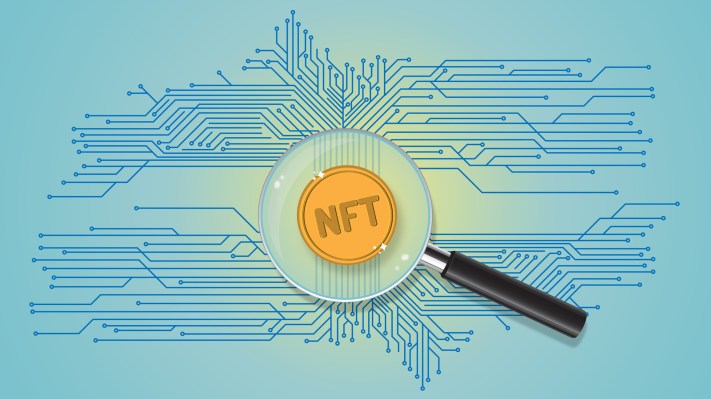In recent months, conversations around NFT creator royalties shifted as some platforms abandoned royalties for other alternatives.
Not everyone is happy about it.
“Every platform had royalties about a year ago,” Alex Salnikov, chief strategy officer and co-founder of NFT marketplace Rarible, said to TechCrunch. Then half a year passed and some marketplaces stopped implementing them, he added.
Creator royalties were originally introduced across the NFT community as a way to pay artists for their work in both primary and secondary sales. In general, the content creator royalty is 2.5% to 10% of an item’s purchase price. Most royalties average about 5%, Salnikov said.
A lot of creators’ initial income comes from primary sales, but over time, secondary sales can build out their income through royalties, Alex Fleseriu, CEO of fine-art-focused Solana NFT marketplace Exchange.ART, told TechCrunch. “It holds up their success and it’s very important for them to make a living.”
“Let’s pick one of these ways and get all of the NFT marketplaces behind it. We’re cursing the market by fighting over market share.” Rarible co-founder Alex Salnikov
Royalties and rewarding creators are the foundations for building long-term value, Shiti Manghani, COO of web3 gaming and development studio Find Satoshi Lab, said to TechCrunch. “The creators and artists will work with platforms that value their work, stop their exploitation and consequently empower them to create their best work.”
Find Satoshi Lab launched a multichain NFT marketplace on Tuesday that enforces royalties. “Web3 was born in many ways to solve for the challenges faced by creators with centralized institutions that did not allow for fair rewards to be awarded,” Manghani said. “[We] would like to stay true to that ethos.”
Separately, Exchange.ART on Wednesday launched its “Royalties Protection Standard,” which enforces creator royalties on secondary sales of NFTs on its platform. This means that new NFT collections on its marketplace can utilize the standard to ensure artists that their work won’t be traded on marketplaces without their consent.
“We’ve seen royalties come under a lot of pressure lately,” Fleseriu said. “We’ve seen marketplaces, protocols, basically allow buyers and sellers to circumvent those royalties, which intensifies this predatory nature of the NFT ecosystem overall, especially in the [profile picture] market.”
Some platforms have abandoned the enforced creator royalty model completely to appeal to traders and, in turn, gained more users. “Now a lot of people trade on those platforms because it’s cheaper, so they’ve gained that market share,” Salnikov said.
In the current weakened NFT market, some platforms are doing everything they can to ensure collectors are using their platforms, Craig Palmer, CEO of MakersPlace, said to TechCrunch. “During a down market, companies need an edge to attract buyers, and those buyers would almost always choose to save as much money as possible, but this move will not benefit the overall long-term well-being of the NFT market.”
There are a number of forces that drive each platform’s decision to support or remove creator royalties, Fleseriu said. “We’re in a bear [market] right now, so there’s a lot of competition that facilitates marketplaces disrupting royalties or making it optional altogether. But it boils down to what is the target audience for each of these platforms; for us, it’s creator-first.”
In late August, X2Y2, one of the biggest Ethereum-based NFT marketplaces by volume, said it would no longer support creator royalties, instead making it like an optional tip jar. In October, Solana-focused NFT marketplace Magic Eden followed suit, sharing it was moving to an optional royalties model — but that’s not set in stone.
“This decision for our marketplace to go optional royalties is not permanent and we are looking forward to sharing more updates soon,” Jack Lu, CEO and co-founder of Magic Eden, said in an email to TechCrunch.
“Making the move to optional royalties was not easy,” Lu added. “However, over the past few months, traders have shown us that static royalty models do not work for them.”
Last week, NFT marketplace LooksRare announced that it will no longer support creator royalties by default but will instead split 25% of its protocol fee with creators and collection owners.
“This update is an evolution of our previous stance, and it’s not something we’re taking lightly,” LooksRare said in a post. “The industry is trending towards zero-royalties, but it’s still our responsibility to support creators in the new landscape.”
But is the royalty-free movement permanent? Maybe not.
“We would like to go back to a royalty-respecting world as soon as possible,” Lu said. “We do not think royalties are bad — we think they are a good model that has served projects critical to our ecosystem. The tension we are running up against is that royalties are not easily enforceable at the protocol level.”
The NFT market is still in its early stages, Palmer said. “Improvements on incentives and rewards are important to pushing the boundaries in any new industry.”
Some examples of this could be bypassing royalties in exchange for a larger piece of primary transactions or commissions for transactions shared across both sides of a transaction through a small buyer premium fee, Palmer shared.
Even though Magic Eden made royalties optional, it’s experimenting with protocol-enabled royalty enforcements for some creators, Lu said. “We are working with Cardinal Labs and Brave Browser to launch the BAT x Adam Ape NFT collection mid-November, which would enforce royalty payments on secondary trading.”
In general, the platforms that still enforce creator royalties think it makes the NFT market better by giving a constant stream of value to creators — but there needs to be a better system for it.
“If I had a message to share it’d be let’s not fight,” Salnikov said. “Let’s pick one of these ways and get all of the NFT marketplaces behind it. We’re cursing the market by fighting over market share.”
